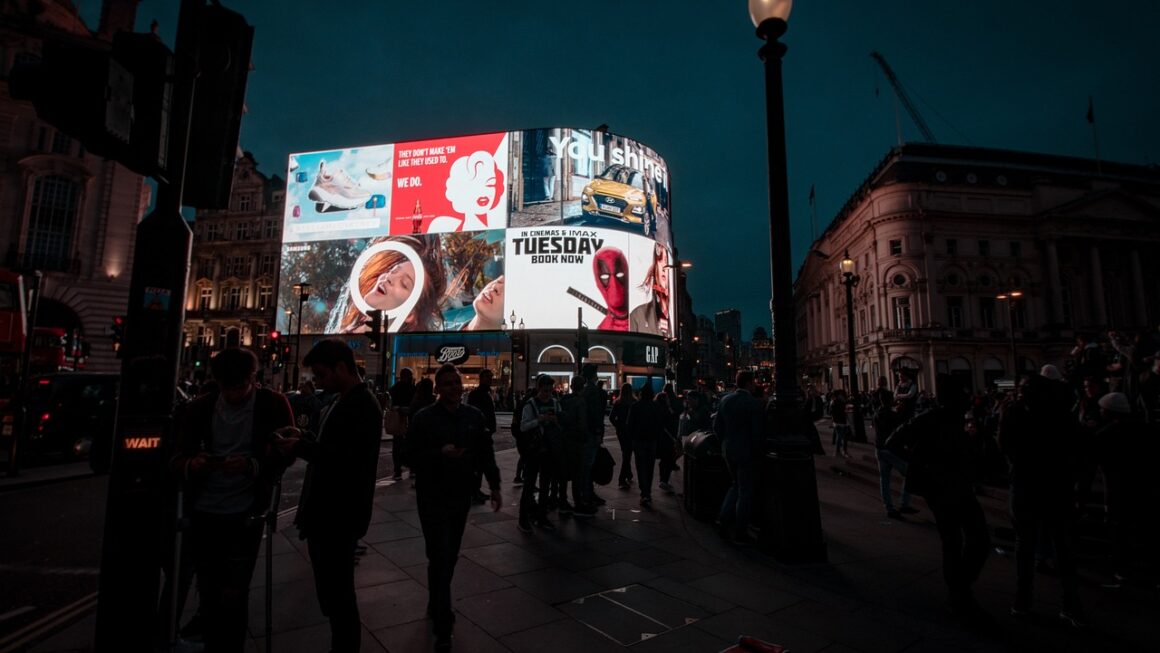AI ad optimization is no longer a futuristic concept; it’s the present and future of effective digital advertising. Businesses of all sizes are leveraging the power of artificial intelligence to enhance their ad campaigns, improve targeting, increase conversions, and ultimately, maximize their return on ad spend (ROAS). This guide will delve into the core aspects of AI-driven ad optimization, providing practical insights and actionable strategies to help you leverage its potential.
What is AI Ad Optimization?
Defining AI Ad Optimization
AI ad optimization involves utilizing artificial intelligence techniques to automate and improve various aspects of digital advertising campaigns. This encompasses everything from audience targeting and ad creative generation to bid management and performance analysis. The goal is to use algorithms and machine learning models to make data-driven decisions that enhance ad performance and achieve desired business outcomes.
How AI Differs From Traditional Ad Optimization
Traditional ad optimization relies heavily on manual analysis and adjustments based on historical data and human intuition. This process can be time-consuming, resource-intensive, and prone to human error. AI, on the other hand, automates many of these tasks, analyzing vast amounts of real-time data to identify patterns and make instant optimizations that are simply impossible for humans to accomplish.
For example:
- Traditional: A marketing manager manually adjusts bids based on yesterday’s performance data.
- AI-powered: An AI algorithm adjusts bids in real-time based on current user behavior, competitor bids, and predicted conversion rates.
Key Benefits of AI Ad Optimization
- Improved Targeting: AI algorithms can identify and target highly specific audience segments based on a multitude of factors, including demographics, interests, behaviors, and purchase history.
- Enhanced Ad Creative: AI can assist in generating compelling ad copy and visuals, optimizing them for different audience segments and platforms.
- Automated Bid Management: AI algorithms can automatically adjust bids in real-time to maximize conversions and minimize costs.
- Personalized Ad Experiences: AI enables personalized ad experiences tailored to individual user preferences and behaviors, leading to higher engagement and conversion rates.
- Increased Efficiency: By automating many ad management tasks, AI frees up marketers to focus on strategic initiatives and creative development.
- Better ROI: Ultimately, AI ad optimization leads to a higher return on ad spend by maximizing the effectiveness of advertising campaigns. A recent study by McKinsey & Company found that companies using AI for marketing and sales saw an average increase of 10-20% in revenue.
AI-Powered Targeting and Audience Segmentation
Granular Audience Insights
AI algorithms can analyze vast amounts of data to uncover granular insights about your target audience. This includes demographic data, interests, online behavior, and purchase history. For instance, AI can identify specific keywords, websites, and social media groups that are most relevant to your target audience.
Predictive Audience Segmentation
AI can go beyond traditional demographic segmentation by creating predictive audience segments based on the likelihood of conversion. This allows you to target users who are most likely to purchase your product or service. For example, AI can identify users who have visited your website multiple times, added items to their cart, or shown interest in similar products.
Dynamic Audience Creation
AI enables dynamic audience creation, where audience segments are continuously updated based on real-time data. This ensures that your targeting remains relevant and effective as user behavior evolves. For example, if a new trend emerges among your target audience, AI can automatically adjust your audience segments to capitalize on this trend.
Practical Examples
- Example 1: An e-commerce company selling running shoes can use AI to identify users who have recently searched for running shoes, visited running-related websites, or participated in online running communities.
- Example 2: A travel agency can use AI to identify users who have shown interest in specific destinations, booked flights or hotels recently, or visited travel-related websites.
AI-Driven Ad Creative Optimization
Automated Ad Copy Generation
AI can assist in generating compelling ad copy that is tailored to different audience segments and platforms. This can save marketers significant time and effort while ensuring that ad copy is optimized for maximum impact. AI can analyze successful ad copy from competitors and use natural language processing (NLP) to generate variations that are both engaging and relevant.
Dynamic Creative Optimization (DCO)
DCO uses AI to automatically adjust ad creative in real-time based on user behavior and context. This ensures that each user sees an ad that is most likely to resonate with them. For example, DCO can change the headline, image, call-to-action, or landing page based on the user’s location, device, or past interactions with your brand.
Image and Video Optimization
AI can analyze images and videos to identify elements that are most likely to capture attention and drive engagement. This includes factors such as color, composition, and facial expressions. AI can also automatically generate variations of images and videos optimized for different platforms and audience segments.
Example Scenarios
- Scenario 1: An online retailer can use AI to automatically generate different versions of an ad showcasing specific products to different customer segments based on their browsing history.
- Scenario 2: A mobile app developer can use AI to optimize the app store listing by dynamically changing the screenshots and descriptions based on user demographics and search queries.
AI in Bid Management and Budget Allocation
Real-Time Bidding (RTB)
AI plays a critical role in RTB, enabling advertisers to bid on ad impressions in real-time based on the value of each individual impression. AI algorithms analyze a multitude of factors, including user data, website content, and competitor bids, to determine the optimal bid for each impression.
Automated Bidding Strategies
AI can automate various bidding strategies, such as target CPA (cost per acquisition), target ROAS (return on ad spend), and maximize conversions. This allows marketers to focus on setting overall goals while AI algorithms handle the day-to-day bid management.
Budget Optimization Across Platforms
AI can optimize budget allocation across different platforms and campaigns to maximize overall performance. AI algorithms analyze performance data across all channels to identify opportunities for reallocating budget to higher-performing campaigns.
Practical Examples
- Example 1: A business utilizing Google Ads can leverage Smart Bidding strategies which use machine learning to optimize bids based on campaign goals (e.g., maximizing conversions, achieving a target cost per acquisition).
- Example 2: Using an AI-powered platform to analyze performance data and automatically adjust budget allocations between Facebook, Instagram, and LinkedIn to maximize reach and conversions within a specific target audience.
Measuring and Analyzing AI Ad Performance
Comprehensive Performance Dashboards
AI-powered analytics platforms provide comprehensive performance dashboards that track key metrics such as impressions, clicks, conversions, and ROAS. These dashboards provide a clear and concise overview of ad performance, allowing marketers to quickly identify areas for improvement.
Automated Reporting
AI can automate the generation of performance reports, saving marketers significant time and effort. AI algorithms can automatically analyze data and generate reports that highlight key trends, insights, and recommendations.
Predictive Analytics
AI can use predictive analytics to forecast future ad performance and identify potential risks and opportunities. This allows marketers to proactively adjust their campaigns to optimize for future performance.
A/B Testing and Continuous Improvement
AI facilitates A/B testing of different ad creatives, targeting strategies, and bidding strategies. This allows marketers to continuously improve their campaigns based on data-driven insights. AI can automatically analyze A/B test results and identify the winning variations.
Example Metrics to Track:
- Click-Through Rate (CTR): Measures the percentage of users who click on an ad after seeing it.
- Conversion Rate: Measures the percentage of users who complete a desired action (e.g., purchase, sign-up) after clicking on an ad.
- Cost Per Acquisition (CPA): Measures the cost of acquiring a new customer through advertising.
- Return on Ad Spend (ROAS): Measures the revenue generated for every dollar spent on advertising.
- Impression Share: Measures the percentage of times your ad is shown when it is eligible to be shown.
Conclusion
AI ad optimization represents a paradigm shift in the world of digital advertising. By automating key tasks, enhancing targeting, and optimizing creative, AI empowers marketers to achieve unprecedented levels of performance and efficiency. As AI technology continues to evolve, it will undoubtedly play an even greater role in shaping the future of digital advertising, making it imperative for businesses to embrace its potential and leverage its power to drive growth. The future of successful ad campaigns hinges on the intelligent application of AI-driven strategies, and now is the time to integrate these tools into your marketing arsenal.




